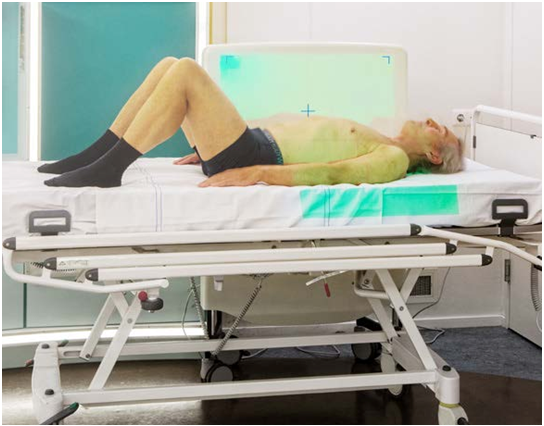Radiotherapy works by targeting high-energy gamma rays or electron beams into cancerous cells. These damaged cells are more prone to radiation damage than the normal tissues. Linear accelerators are multi-modality ionizing radiation generators with associated imaging devices that are currently used for delivery of external beam radiotherapy.
Contemporary linear accelerators provide wither 6 MeV photons in the “low energy” range machines or dual/triple photon energy and several electron energies. The following systems are incorporated into the linear accelerators: multi-leaf collimator (MLC) for beam Shaping, capability to deliver intensity modulated radiotherapy (IMRT) and a 3D image guidance system (IGRT). They also provide an electronic portal imaging system for imaging treatment beams.
Other additional features may be incorporated into linear accelerators such as: arc-based IMRT delivery, total body irradiation, high dose rate electrons, and more. Despite the high capital cost of purchasing them, their high patient throughout over a long lifespan makes them extremely cost-effective compared with the other treatment options. The operation of linear accelerators should be according to the existing standards and regulations which include: IEC standards, radiation regulations, guidelines for radio therapy room design, and more.
Technical Considerations
The technology used in conventional linear accelerators is essentially the same for all of them. The high energy generation can be achieved either by implementing the “traveling waveguide technology” or by implementing the “standing waveguide technology”. The first approach is simpler and more reliable, while the second approach features a more stable treatment beam. The generated radiation beam is flattened and shaped using collimation devices to form a beam matching the shape of the tumor.
The wave guide, the filters, and the collimator are mounted on a gantry which rotates around the patient which allows the tumor to be irradiated from multiple directions. There is a linear accelerator patient coach specifically designed to allow irradiation of the patient from multiple directions.
Modern linear accelerators are designed to enable intensity-modulated radiotherapy (IMRT). This is a dynamic radiotherapy delivery method which enables good control over the three-dimensional dose distribution: the delivered beam instead of being flat, changes the intensity at different points within the beam.
There are different types of linear accelerator IMRT delivery methods:
• Step and Shoot Method: This method consists of delivering a series of different shaped fields formed by the MLC to build up a variable intensity pattern. The irradiation is stopped between each field.
• Dynamic MLC Method: In which the radiation runs constant, while the MLC leaves move across the field at variable speeds.
• Arc Therapy Method: In which the radiation runs continuously and the gantry collimators anc MLC leaves are all moving continuously. The does rate also varies during the delivery. Treatments are delivered in an arc, or sometimes in two arcs. This is probably the best choice for IMRT.
Learn more about Radparts and the variety of services and parts they offer to repair medical equipment including: linear accelerators parts, CT scanners parts, linac parts, and radiation oncology equipment at www.radparts.com. To contact one of our medical equipment repair specialists for parts or service call toll free 877.704.3838 for 24/7/365 support.



